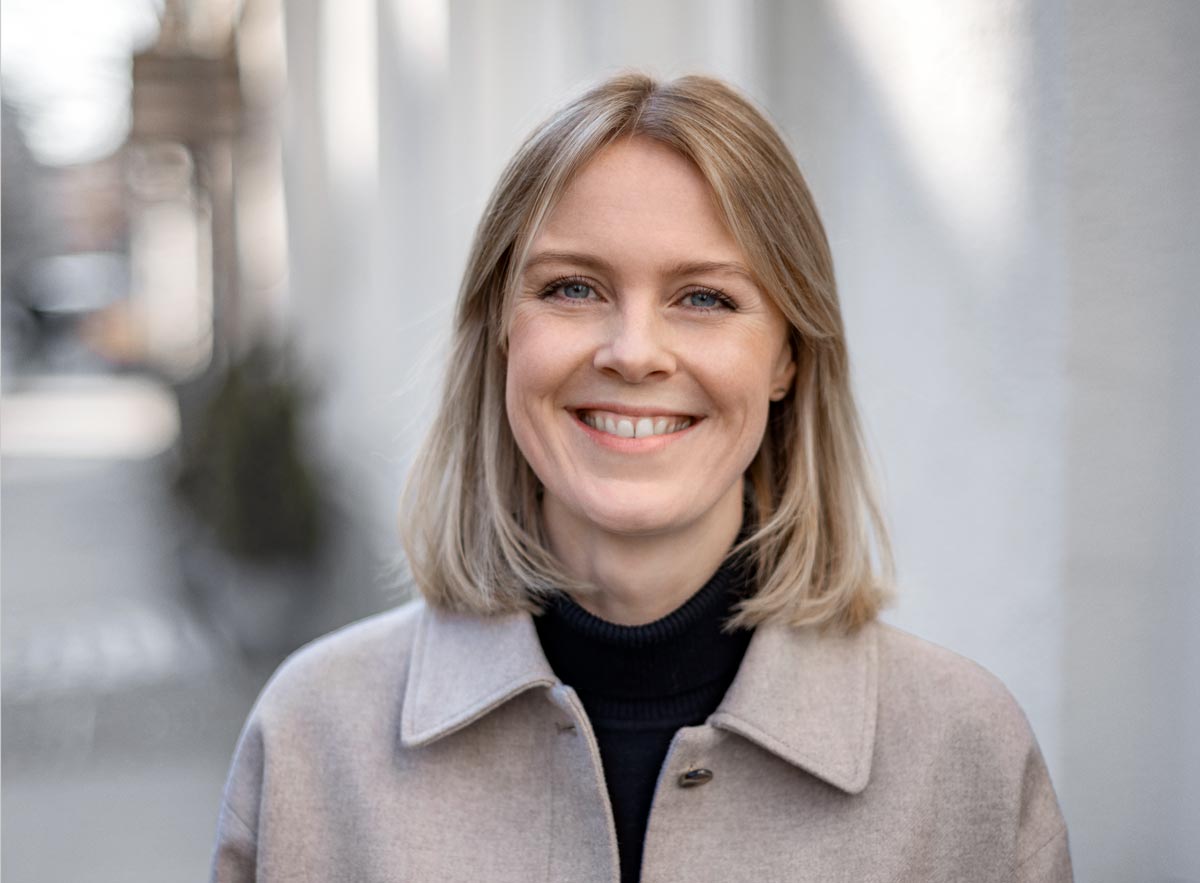The past three years have seen major changes in the asset management sector. The boom in homeworking and online retail as a result of the COVID-19 lockdowns and the introduction of new environmental, social, and governance (ESG) standards for buildings have all come to a head and vastly accelerated already-emerging trends. Today’s asset managers must adopt new approaches if they are to keep abreast of these changes and ensure they are making the right decisions for both their businesses and their real estate portfolios.
For Katharina Martin, Head of Commercial Asset Management, the only way to master these new challenges is to maintain close and regular communication with all stakeholders. As she explains, the role of asset management is changing to one of a strategic partner and advisor.

Ms Martin, how has the asset management sector changed over recent years?
Go back three, four, or five years and if you had an attractive property in your portfolio, it was much easier to find the right tenant than it is today. Markets like Berlin were a landlord’s market – no question about it – and it wasn’t unusual to see rental contracts with terms of up to ten years. Once signed, the contract could essentially tick along on its own and there was much less work involved in maintaining the ongoing relationship with the tenant. Today’s tenants have very different requirements. For them, the big focus is on future-of-work concepts. Companies often know that they need to revamp their office layout and design, but they don’t have a clear picture of how to create a company office that reflects their corporate branding while also providing an attractive space for staff to meet and work. So there’s a great opportunity for us to start a conversation with tenants and position ourselves as a solution provider. Change is also a constant in today’s market, which means that companies’ workspace requirements can alter over the course of a five-year lease. Our job is to address these changing requirements in good time and provide tailored solutions, such as the option to terminate the lease for part of the leased premises, so that both sides enjoy the flexibility they need. As asset managers, we are increasingly playing a pivotal role as coordinators, one in which proactive communication with both internal and external stakeholders is becoming even more important.
To meet the highly complex requirements of today’s tenants, the job of the asset manager must begin even before the purchase stage, with the development of an effective strategy for positioning the real estate on the market and attracting the attention of potential tenants. This requires a detailed macro and micro analysis of the location, the competition, and the requirements of potential users. Our task as asset managers is to put together a compelling real estate package that will attract interest from both tenants and investors. Buildings and districts boasting exceptional architecture and exciting interior design are no longer enough. Marketing is key if we are to really draw attention to our portfolio. In the sense of a comprehensive customer journey this involves creating an effective brand, a prestigious address, and a powerful online presence. Consistency is key – from when potential tenants or investors first look up the address online, right through to when they view the premises in person, everything must tell the same story. So you see, asset management has become much more strategic and complex.
As an asset manager, how do you keep up to date with what different tenants and industry sectors are looking for?
I always keep an ear to the ground because the situation changes all the time. In today’s market, it is vital to maintain close and regular communication with tenants and other market players, including estate agents, industry networks, and even with competitors, so that you can build up a picture of the different requirements and the challenges associated with these. How are companies’ workspace requirements expected to change in the short, medium, and long-term? What type of working environment is in demand, especially among the high potential talent in a particular industry? If you know that a tenant is likely to want to change the layout of their premises or expand within the same building, you can be ready to make them an attractive offer when a suitable space becomes available in the same building or another property within your portfolio.

ESG standards are also having an impact on the real estate market. What are the knock-on effects of these for asset management?
A modern sustainable asset management approach must incorporate ESG standards at all stages. This starts right from the point of purchase with the commissioning of an ESG due diligence report: What investments are required to bring the building up to the latest environmental standards? And, with regard to social responsibility, how can the building be improved to promote the wellbeing of its users? Tenants too are much more demanding in this area than a few years ago. More and more of them are asking to know the carbon footprint of the building they are leasing. Just like us, they have a vested interest in improving the environmental performance of the building because they want to demonstrate this commitment to their stakeholders or fulfill their reporting obligations.
Green-lease agreements have an important role to play here and, unlike in the past, tenants are now generally open to this option. To ensure the green clauses in these agreements translate into real-life action, you need a digitized system for collecting and analyzing the latest data. You must also maintain open lines of communication with tenants and work together with them to define focus areas and points for improvement based on the available data. By using data intelligence platforms to collect data automatically, we can track the consumption and performance of our buildings essentially in real-time, meaning we can respond to problems much more quickly and improve the energy efficiency of our assets.
Good-quality, comparable data of this kind can also be used to demonstrate to investors, using Green Capex plans, how we are adding value to our buildings through a “manage to green” strategy in preparation for a future exit. Our main focus at the moment is on the energy consumption and carbon footprint of our real estate portfolio. However, with the increasing importance of a circular economy, we are also starting to collect data around the building structures themselves. The aim is to examine the complete lifecycle of our buildings, including the potential for recycling or for using recycled materials in our refurbishment and renovation projects.
In addition to “E for environmental”, we are also seeing increasing emphasis on “S for social”. The public, and also a growing number of investors, want to see evidence of how real estate investment projects are contributing to a socially balanced district. Likewise, when it comes to “G for governance”, asset managers are coming under increasing scrutiny as to what positive contribution tenants in certain industries are making to society or whether these businesses are actually having a negative impact. These questions, which have come into sharp focus since the introduction of the EU taxonomy system in spring 2021, are yet another example of the new challenges asset management is facing.
Ultimately, it's the tenants that make you your money. Right now, these companies are facing the double challenge of adapting their business models for a sustainable and digital future and also attracting and retaining high potential talent. How do you see the role of asset management in this?
We support our tenants as a partner and advisor. We work together with them to achieve their goals – for instance helping them realize their office design vision. A company's premises should ideally reflect its philosophy and core brand values, while also promoting an attractive and creative working environment that inspires staff to be truly innovative and achieve their business goals. Smaller and newer companies often benefit from advice in selecting the right workspaces for them and deciding what type of environment and shared facilities they need. We therefore ask our potential tenants lots of detailed questions, analyze their requirements, and then work together with external architects and sometimes workplace consultants to find the perfect solution for them. Here again, ESG standards have an important role to play, and we work closely with our internal ESG team to put together an exciting range of options for our tenants. These include green spaces both in and around the building; e-mobility solutions such as car-sharing and charging points for EVs and electric bikes; and bike storage with shower facilities so that those who cycle to work can freshen up before entering the office.
Demand is also growing for communal spaces, such as seating areas where staff can eat lunch together and hold informal meetings, as well as recreational facilities, be it an office table tennis table or gyms and catering in the nearby vicinity. In addition, we endeavor to attract a mix of tenants whose businesses make the local district or neighborhood an even more attractive proposition. For instance, if the local area doesn’t already have a service that tenants are looking for, perhaps there is an opportunity to attract a relevant business as one of our tenants. Health and wellbeing businesses, such as fitness classes and mindfulness training, are particularly sought after. This way of thinking brings us back full circle to the idea of creating an overall package – or brand – for our real estate. The challenge is to work out how best to position this brand on the market.
The job of an asset manager has become much more complex and challenging in recent years. What do you enjoy most about your job?
I love the fact that my job is more varied and strategic than ever before. As an asset management team, we have the opportunity to really drive one of the sector’s most significant transformation plans to carbon-neutral real estate. I’m excited to keep learning and developing my skills in this area, as well as building our portfolio so that we as a team, together with our internal and external partners, can go on to even greater success.


